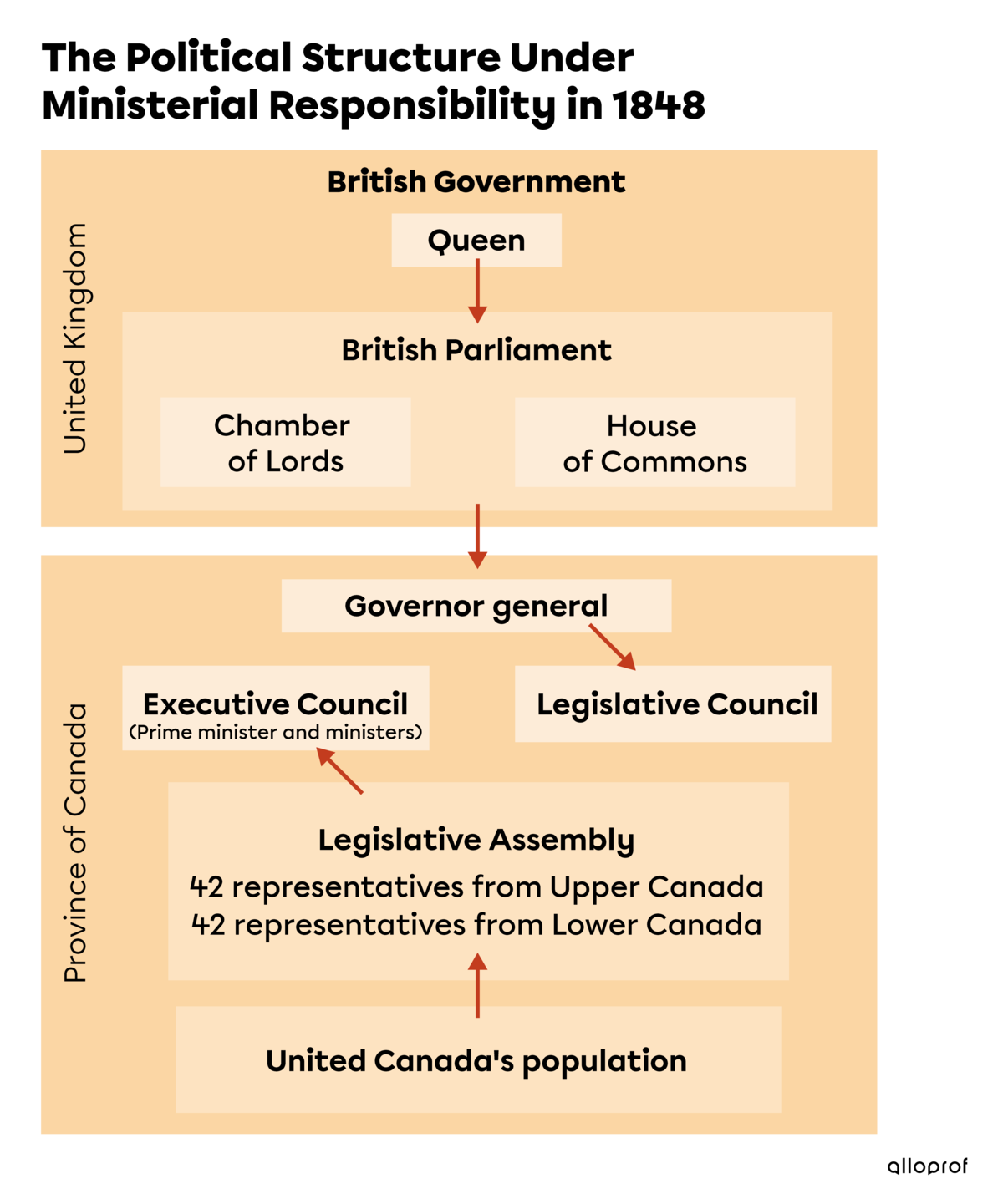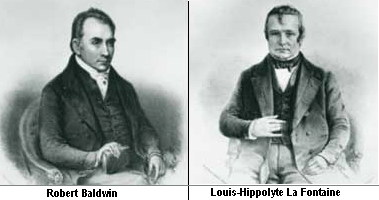The terms responsible government and ministerial responsibility mean the same thing.
After the Durham Report, the British Crown decided to unify Upper Canada and Lower Canada. Several groups in Lower Canada opposed the planned unification, but it was still adopted in 1840 with the Act of Union. Although Lord Durham suggested implementing a responsible government, the British Crown did not follow this recommendation, wanting to maintain control of its colonies.
However, those who lived in Upper Canada and Lower Canada would fight to obtain responsible government. To this end, a union was formed between the reformers of Lower Canada, led by Louis-Hippolyte La Fontaine, and the reformers of Upper Canada, led by Robert Baldwin.
This alliance, which came to power in 1841, led to the creation of a responsible government in 1848.
In a responsible government, the members of the Executive Council, which administers laws and manages the budget and the territory, are chosen among the members of the Legislative Assembly. The members of the Legislative Assembly are themselves elected by the people. This structure gave real power to the Legislative Assembly. This was not the case before 1848, when the Executive Council was appointed solely by the Governor. It was the responsibility of the ministers (members of the Executive Council) to represent the people by supporting their ideas.
With a responsible government, the colony had a great deal of independence in terms of its organization (taxes, levies and education). However, the king kept most of the power over external politics (army, international relations and international trade).

